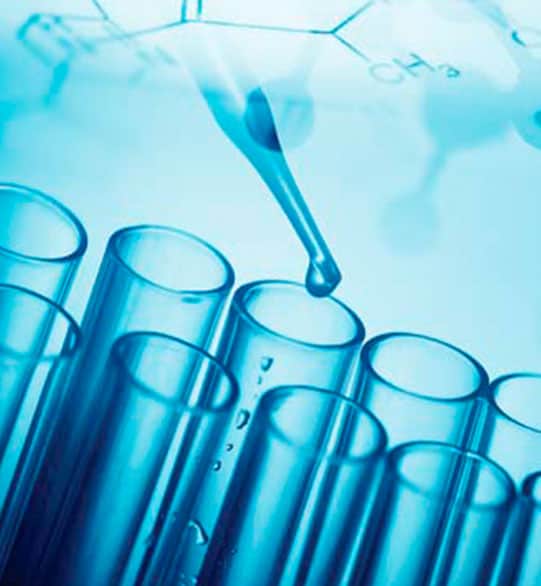What Is The Difference Between Fresh and Frozen IVF Cycles?
Understanding the science behind fertility treatments can be overwhelming — especially with the endless (and sometimes inaccurate) information online. This blog will arm you with the information you need to choose the path that’s best for your growing family.
What is an IVF Cycle?
Before we dive into the details, it’s important to start with the basics. IVF stands for In-Vitro Fertilization. It’s an effective fertility treatment that has been in practice for approximately 40 years— and has helped countless patients who’ve struggled with conceiving a child on their own.
Here’s How it Works:
- A woman’s egg is retrieved. This egg is either from the intended mother or a pre-screened egg donor.
- A man’s sperm is retrieved. This sperm can come from the intended father or a pre-screened sperm donor.
- In the lab, the eggs are fertilized with the sperm — these fertilized eggs are called “embryos.”
- The embryos are closely monitored as they grow and begin to develop in incubators.
- After approximately 5 days, the embryos reach what is known as the “blastocyst” stage. This is when the embryo has developed enough cells that it can then be transferred to a woman’s uterus.
- The embryo is implanted in a woman’s uterus, where it will eventually grow into a baby. Depending on the needs of the future parents, it can be implanted in the intended mother or a gestational surrogate.
Frozen Cycle
Fresh sounds better — after all, isn’t fresh always best? Understandably, that’s probably your first thought when you hear references to fresh and frozen IVF cycles. The terms can be misleading, and the approach will depend on your unique medical needs and preferences. Now that we covered what happens during IVF, we can take a deeper look at what is meant by “fresh” and “frozen.”
What is a Fresh IVF Cycle
A fresh IVF cycle is when an IVF cycle is completed using eggs and embryos that were never frozen. After the eggs are retrieved, they are immediately fertilized by semen in the lab. Once they grow for 5 days (can also be 3 days, but best practices aim for 5 days) into the blastocyst stage (an embryo 5 days old), they are implanted into a woman’s uterus.
The Benefits of Fresh Eggs
- Fresh cycles have been used for decades in IVF treatment with great success.
- The hormones given to women for stimulating egg production increase the probability that these embryos will be usable.
- With weaker semen fresh fertilization can produce better outcomes than using frozen semen or frozen eggs.
What is a Frozen IVF Cycle?
A Frozen IVF cycle is completed using eggs that were frozen (also known as vitrification). After the eggs are retrieved, they are frozen to be used for IVF treatment at a later date. When it’s time for the IVF cycle, the eggs are thawed and then fertilized with sperm in the lab to create embryos. Just like fresh IVF, when the embryos are mature enough (5 days), they are implanted into a woman’s uterus to grow.
The Benefits of Frozen Eggs
- Using frozen eggs can help preserve or extend a woman’s fertility — in some cases a woman may choose to freeze her eggs if she would like to start a family at a later date.
- In select cases, frozen eggs may help improve fertility outcomes. Research reported to the Society for Assisted Reproductive Technology indicated that frozen embryo cycles resulted in more live births for women over 35 than fresh cycles.
- Frozen eggs can provide more options for parents who require egg or sperm donors by giving them access to donors from around the world—without having to travel.
- IVF cycles using frozen eggs tend to be more cost-effective.
- No need for travel — implantation can be done at the recipient’s home clinic.
- There is no need for repeated egg retrievals, as one retrieval can cover multiple IVF cycles.
- There is more flexibility with the implantation date — it can be aligned with the recipient’s own schedule.
What is a Frozen Embryo Transfer (FET)?
We’ve talked about fresh and frozen eggs, but there’s another element to “fresh” and “frozen” fertility that you will come across in your research: Frozen Embryo Transfer (also known as FET). A frozen embryo transfer is just like it sounds — it’s IVF that uses frozen embryos. There are a few instances when frozen embryos are typically used:
- Unused or leftover embryos from an IVF cycle can be vitrified, stored, and used again for another cycle.
- It’s an ideal option if you’re using an egg donor from abroad. In this case, the fresh donor eggs are fertilized in the lab, allowed to grow to the blastocyst stage, vitrified and transported to the recipient’s home-clinic for implantation.
- For PGS cases, (Pre-Implantation Genetic Diagnosis), often the testing of the embryos requires a biopsy, which is sent for analysis that takes time, so the embryos which were tested need to be frozen and kept for a future embryo transfer cycle to allow time for the analysis and results of the PGS to come through.
- Embryos that are donated by one couple to another — in the case of a couple who has surplus embryos and has already achieved a child, but who wish not to destroy the frozen surplus embryos and instead donate to other intended parents.
Are Frozen or Fresh Embryos Better?
In a nutshell, no… In the past, the widespread belief was that fresh cycles were more successful than frozen cycles — but today, research and extensive experience shows us that a frozen cycle produces results very similar to a fresh cycle. Ultimately, what works best depends on the intended parent’s medical needs and the assessment from an experienced medical team. Understanding the differences and advantages will put you in a better position to choose the treatment that best supports your own fertility journey. ELITE IVF provides personalized and high-quality care to help make your baby dreams come true. We offer fresh, frozen and hybrid egg donation cycles. Our hybrid approach gives you the best of both worlds — fresh egg donation efficacy coupled with the convenience of “frozen delivery” to your home clinic. Speak with a fertility specialist today to find out more.
Additional Resources & Research Papers
- Two similar studies on fresh versus frozen were reviewed; these studies showed that fresh embryo transfers are not any more effective [1], [2].
- In women with advanced endometriosis, a 2019 study showed that a freeze-all strategy produced more implantations, clinical pregnancies, and live births than the fresh embryo transfer [3].
- Clinical reports indicate conventional IVF success rates by age, with a 41.5% success rate for women under 35, a 31.9% success rate for women 35-37, a 22.1% success rate for women 38-40, a 12.4% success rate for women 41-42, a 5% success rate for women 43-44 and a 1% success rate for women 45 and older [4].
- At ELITE IVF, we have seen that IVF with egg donation provides significantly higher clinical success rates than with conventional IVF.
- [1] https://www.bmj.com/content/370/bmj.m2519
- [2] https://www.fertstert.org/article/S0015-0282(18)30425-4/fulltext
- [3] https://www.ncbi.nlm.nih.gov/pmc/articles/PMC6856047/
- [4] https://www.cdc.gov/art/ART2010/PDFs/ART_2010_Clinic_Report-Full.pdf


